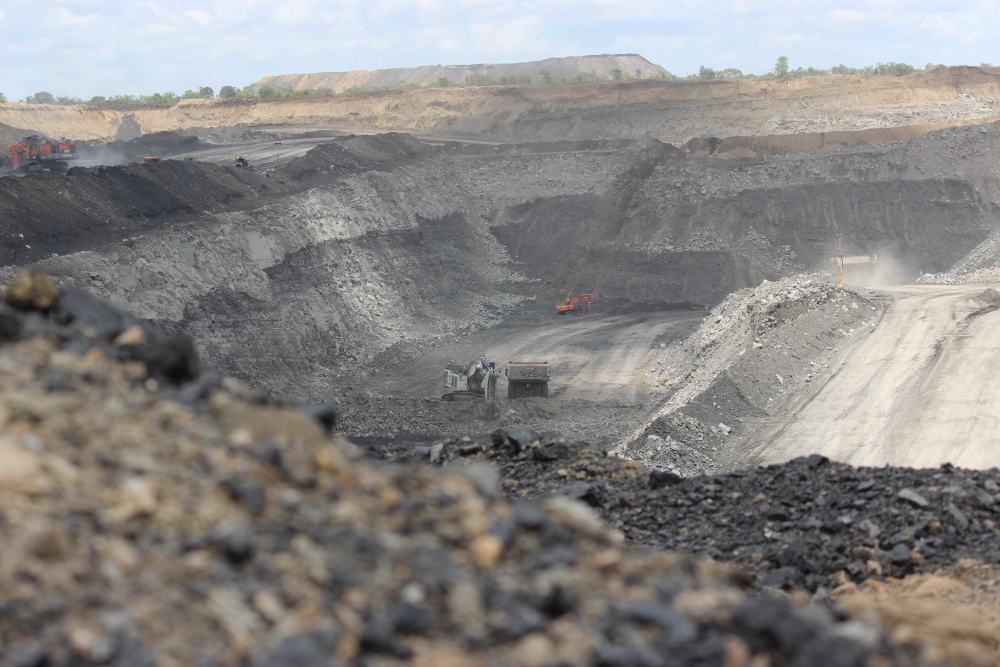
Spontaneous combustion of coal is a phenomenon that happens when the rate of heat generated exceeds the rate of heat loss in heterogeneous and porous coal particles. This propagates internal chemical reactions in the inter-particle channels and microstructure leading to self-heating and spontaneous combustion. For example, in coal stockpiles, spontaneous combustion is a dynamic thermal hazard that results in the loss of coal as a resource and possible caking which creates health and safety issues. These include open fires and the production of noxious gases such as carbon monoxide and nitrous oxide in addition to harmful elements such as arsenic, selenium, mercury and lead. In this GRT industry article, we focus on the causes, effects, preventative measures and best practice dust control for spontaneous combustion of coal.
Firstly, let’s mention and focus on what coal fuels spontaneous combustion and self-heating:
The mechanism of stockpiled coal self-heating is mainly propagated by low-temperature oxidation. At low temperatures, coal is oxidized in the presence of oxygen-rich air. Coal and oxygen reaction at low temperature is exothermic. Some reaction sequences are endothermic. Low-temperature oxidation is the main source of heat. After long periods of time, the interior temperature can reach a sufficient level to produce the critical flow of volatiles required for ignition even when the ambient temperature is still relatively low. Other exothermic processes such as microbial metabolism, the interaction of coal with water and oxidation of pyrite also contribute to the self-heating of coal. The stepwise propagation of spontaneous combustion of coal is as follows:
A typical coal mine site runs operations that involve material haulage via conveyor belts to a stockpile after coal is mined from underground operations. These stockpiles consist of gaseous species like oxygen, water vapour and gaseous product liberated by oxidation reactions. The oxidation of coal at different temperatures results in the generation of different gases and soot and loss of the economic value of coal. Take your peak from the table below to find out the effects of spontaneous combustion of stockpiled coal at a mine site. The temperature is the main determinant factor of the effects of spontaneous combustion of stockpiled coal. The higher the temperature the more likely the severity of the effects of spontaneous combustion of stockpiled coal.
| Duration | Temp (ºC) | Phenomenon | Gas generated |
| General Oxidation period | 25 – 30 | Partial temperature increase | Exhalation of moisture & gas in coal |
| 30 – 40 | Generation of moisture | ||
| 40 – 50 | Dry, decomposition of wood | ||
| 50 – 69 | Generating paraffin smell | ||
| Early Heating period | 60 – 100 | Quickly increasing temperature (especially around 84ºC) | H2O, CO about 80ºC |
| 100 – 150 | Rapid increase in temperature (spontaneous combustion gas) | CO2 about 150ºC | |
| 150 – 200 | Rapid temperature increase | CH4 about 250ºC | |
| 200 – 300 | Slight decomposition of coal & more strong simulative smell | Ethane & ethylene gas relative to temp increase | |
| Initial Heating period | 300 – 500 | Ignition & carbonization of coal | Smoke from various gases, H2 gas generated |
| Later Heating period | 500 – 800 | 2nd decomposition of coal, coalition & gas combustion. | Huge amounts of gas & smoke, Stock coal fire |
In our solution-finding mission, we focus on available methods to prevent the spontaneous combustion of stockpiles. Here as some of the measures:
Prevention of combustion by air isolation:
Don’t stock long-term high volatile coals
It is important to implement best practices for dust control in coal mines. Dust suppression on coal stockpiles using water alone accelerates the chances of spontaneous combustion in coal which creates more problems. The first thought is to use water to reduce the temperature of the coal stockpile, but the organic nature of coal and its metamorphosis from plant matter creates a fertile substrate for oxidation which can be propagated by the addition of water. In addition, the temperature differential between the water meant to suppress dust and the coal particles themselves renders the intended outcome of suppressing dust null and void. The water droplets from the fog cannon quickly evaporate on contact with the coal particles on the stockpile. So, in addition to the prevention measures given above, it is best to use a dust suppression product which:
The stages involved in this process are well represented by the requirements for:
Your feedback is important to us. If you enjoyed reading this Global Road Technology industry update and found it informative, please let us know by leaving a REVIEW.
Are environmental regulations, health and safety concerns or potential profit loss a concern right now?
Contact Us Now